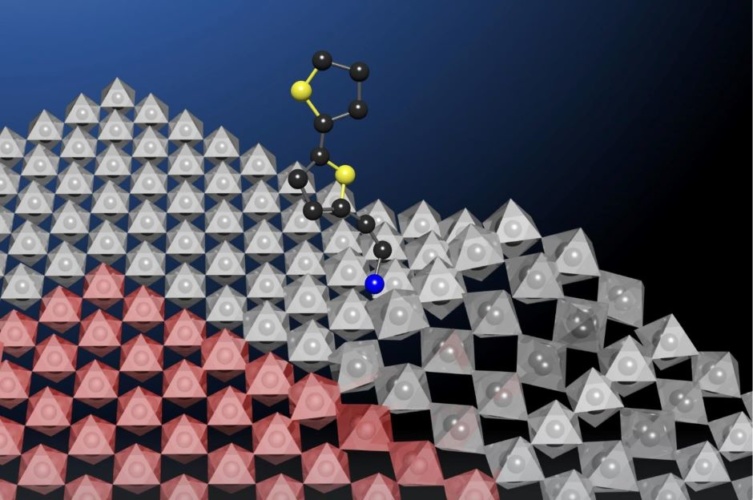
As well as inhibiting ion movement, a Purdue University-led research team has also found that halide perovskites can stack together to form heterostructures that would allow a device to perform more functions. The results have been published in Nature.
Halide perovskites are soft and flexible materials touted for use in solar panels but hamstrung so far by instability.
Researchers know that solar cells made out of perovskites perform as well as commercial solar cells made of silicon. Perovskites have the potential to be even more efficient than silicon because less energy is wasted when converting solar energy to electricity.
Another benefit of perovskites is that they can be processed from a solution into a thin film, thereby reducing costs and boosting quantities compared to silicon.
"There have been 60 years of a concerted effort making good silicon devices. There may have been only 10 years of concerted effort on perovskites and they're already as good as silicon, but they don't last," said Letian Dou, a Purdue assistant professor of chemical engineering.
According to Purdue, a perovskite is made up of components that an engineer can individually replace at the nanometre scale to tune the material's properties. Including multiple perovskites in a solar cell or integrated circuit would allow the device to perform different functions, but perovskites are too unstable to stack together.
Dou's team discovered that adding a rigid bulky molecule – bithiophenylethylammonium - to the surface of a perovskite stabilises the movement of ions, preventing chemical bonds from breaking easily. The researchers also demonstrated that adding this molecule makes a perovskite stable enough to form clean atomic junctions with other perovskites, allowing them to stack and integrate.
"If an engineer wanted to combine the best parts about perovskite A with the best parts about perovskite B, that typically can't happen because the perovskites would just mix together," said Brett Savoie (SAHV-oy), a Purdue assistant professor of chemical engineering. "In this case, you really can get the best of A and B in a single material. That is completely unheard of."
The bulky molecule is said to allow a perovskite to stay stable even when heated to 100oC. Solar cells and electronic devices require elevated temperatures of 50-80oC to operate.
These findings also mean that it could be possible to incorporate perovskites into computer chips, the researchers said in a statement. Transistors rely on junctions to control electrical current. A pattern of perovskites might allow the chip to perform more functions than with just one material.

Project to investigate hybrid approach to titanium manufacturing
What is this a hybrid of? Superplastic forming tends to be performed slowly as otherwise the behaviour is the hot creep that typifies hot...